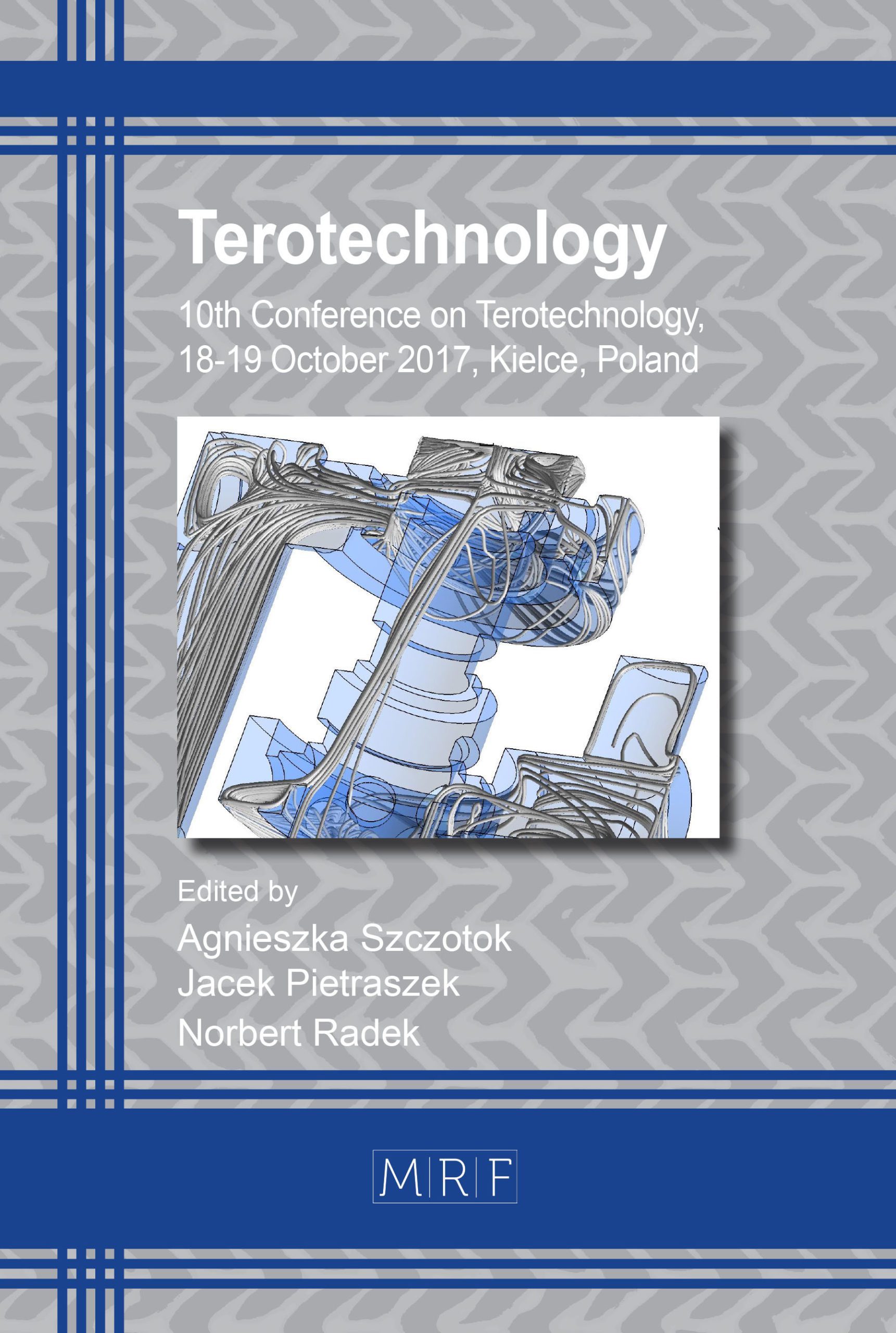The Influence of Friction Coefficient on Forward Slip in Experimental Research on Cold Longitudinal Flat Rolling
MIŁEK Tomasz
download PDFAbstract. The paper presents experimental results that concern cold longitudinal rolling of flat bars made from EN AW-6063 aluminium for different conditions. The investigations aimed at determining the impact of friction factors on the forward slip. The friction factors were determined by the method of the roll bite angle. The forward slips were calculated from Fink’s, Drezden’s and Vinogradov’s formulae. On the basis of investigations of cold longitudinal rolling of flat bars made from EN AW-6063 aluminium, it was found that the forward slip increases with an increase in friction factor.
Keywords
Longitudinal Rolling, Friction Factor, Forward Slip, EN AW-6063 Aluminium
Published online 7/16/2018, 7 pages
Copyright © 2018 by the author(s)
Published under license by Materials Research Forum LLC., Millersville PA, USA
Citation: MIŁEK Tomasz, ‘The Influence of Friction Coefficient on Forward Slip in Experimental Research on Cold Longitudinal Flat Rolling’, Materials Research Proceedings, Vol. 5, pp 67-72, 2018
DOI: http://dx.doi.org/10.21741/9781945291814-12
The article was published as article 12 of the book Terotechnology
![]() Content from this work may be used under the terms of the Creative Commons Attribution 3.0 licence. Any further distribution of this work must maintain attribution to the author(s) and the title of the work, journal citation and DOI.
Content from this work may be used under the terms of the Creative Commons Attribution 3.0 licence. Any further distribution of this work must maintain attribution to the author(s) and the title of the work, journal citation and DOI.
References
[1] Wusatowski Z.: Fundamentals of rolling, Śląsk, Katowice, 1969.
[2] Lange K.: Handbook of metal forming, McGraw-Hill Book Company, 1985.
[3] Miłek T., Kopacz Z.: Evaluation of the possibility of diameter reduction in Mt 1020 steel tubes by rolling on the WPM-120 cold profile eccentric rolling machine, 24th Int. Conf. on Met. and Mat., Brno (2015) 377-382.
[4] Sińczak J. et al.: Metal forming processes, AKAPIT, Kraków 2001 (in Polish).
[5] Kowalik M., Trzepieciński T.: Experimental and numerical study of longitudinal cold rolling of the shafts, Steel Res. Int. se 14th Int. conf. Metal Forming (2012) 63-66.
[6] Engler O., Schäfer C., et al.: Flexible rolling of aluminium alloy sheet—Process optimization and control of materials properties, J. Mater. Process. Technol. 229 (2016) 139-148. https://doi.org/10.1016/j.jmatprotec.2015.09.010
[7] Tabary P.T., Sutcliffe M.P.F., Porral F., et al.: Measurements of friction in cold metal rolling, ASME J. Tribology 118 (1996) 629-636. https://doi.org/10.1115/1.2831584
[8] Gjønnes, L., Andersson B.: Mechanisms of surface deformation during cold rolling of aluminium, J. Mater. Sci. 33 (1998) 2469-2476. https://doi.org/10.1023/A:1004328513471
[9] Gerasimov D., Biba N. Stebunov S., Kadach M.: Implementation of a dual mesh method for longitudinal rolling in QForm V8, Mater. Sci. Forum 854 (2016) 158-162. https://doi.org/10.4028/www.scientific.net/MSF.854.158
[10] Ściężor W., Mamala A., Kwaśniewski P.: Analysis of properties of selected aluminium alloys, obtained by twin roll casting method and subjected to cold rolling process, Key Eng. Mat. 641 (2015) 202-209. https://doi.org/10.4028/www.scientific.net/KEM.641.202
[11] Grydin O., Bondarenko S., Stolbchenko M., et al.: Rolling of flat Aluminum strips with tailored mechanical properties, Mater. Sci. Forum 854 (2016) 87-92. https://doi.org/10.4028/www.scientific.net/MSF.854.87
[12] J.R. Davis, Aluminum and Aluminum Alloys, ASM Specialty Handbook, ASM International, Ohio, 1993.
[13] Hirsch J.: Aluminium in innovative light-weight car design, Mater. Trans. 52 (2011) 818-824. https://doi.org/10.2320/matertrans.L-MZ201132
[14] Czarny R.: Plastic lubricants, WNT. Warszawa, 2004 (in Polish).
[15] Information on http://www.chem-rozlew.com/
[16] Information on http://www.orlenoil.pl/
[17] Information on http://www.total.com.pl/
[18] Information on http://www.basiccomponents.com.pl/































